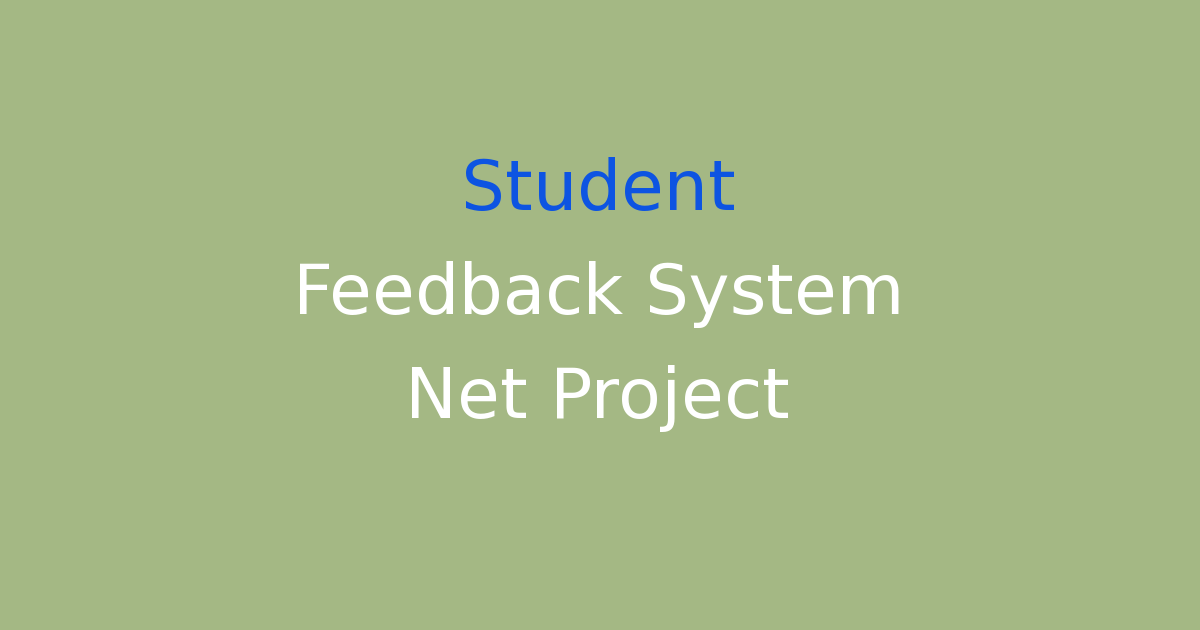Project of the student feedback system.
Student Feedback System Net Project
Introduction
In today’s rapidly changing educational landscape, it has become more important than ever to gather feedback from students to improve the quality of education. One way to do this is through the implementation of a student feedback system. This project aims to develop a student feedback system using .NET technology that will allow students to provide feedback on their learning experience.
Problem Statement
The current system for gathering student feedback is often tedious and inefficient. Many institutions still rely on paper-based forms that are time-consuming to distribute and collect. This leads to a low response rate and can result in inaccurate or incomplete data. Additionally, the data collected is often not easily accessible or actionable for instructors and administrators.
Existing System
The existing system for gathering student feedback typically involves distributing paper forms to students at the end of a course or semester. These forms ask students to rate various aspects of the course, such as the instructor’s teaching style, the course material, and the overall learning experience. Once the forms are completed, they must be collected, tabulated, and analyzed manually.
Disadvantages
There are several disadvantages to the existing system of gathering student feedback. One major drawback is the low response rate, as many students may not take the time to fill out and return the paper forms. This can result in biased or incomplete data that does not accurately reflect the student body’s experiences. Additionally, the manual process of collecting and analyzing paper forms is time-consuming and labor-intensive, making it difficult for instructors and administrators to use the feedback effectively.
Proposed System
The proposed student feedback system will be a web-based application built using .NET technology. Students will be able to access the system from any device with an internet connection, making it convenient and easy to provide feedback. The system will include different survey questions that students can answer to rate various aspects of their learning experience. The feedback will be collected automatically, eliminating the need for manual data entry.
Advantages
There are several advantages to implementing this new student feedback system. Firstly, the web-based nature of the system will make it more accessible to students, increasing the likelihood of a higher response rate. Additionally, the automated data collection and analysis will provide instructors and administrators with real-time feedback that can be used to make immediate improvements to the learning experience. The system will also generate reports and visualizations that will help to identify trends and patterns in student feedback.
Features
The student feedback system will include several key features to enhance the user experience and make the feedback process more efficient. Some of the features of the system will include:
– User-friendly interface: The system will have a simple and intuitive interface that will make it easy for students to provide feedback.
– Customizable survey questions: Instructors will be able to create customized survey questions tailored to their specific courses and teaching styles.
– Real-time data analysis: The system will provide instant data analysis and visualization, allowing instructors to see feedback trends in real-time.
– Reporting tools: The system will generate comprehensive reports and visualizations that will help instructors and administrators to make data-driven decisions.
Conclusion
In conclusion, the implementation of a student feedback system using .NET technology has the potential to revolutionize the way feedback is gathered and utilized in educational institutions. By streamlining the feedback process, increasing response rates, and providing real-time data analysis, this system will enable instructors and administrators to make more informed decisions that will ultimately improve the quality of education for all students. It is clear that the benefits of this system far outweigh the limitations of the existing paper-based system, making it a valuable tool for enhancing the educational experience.

